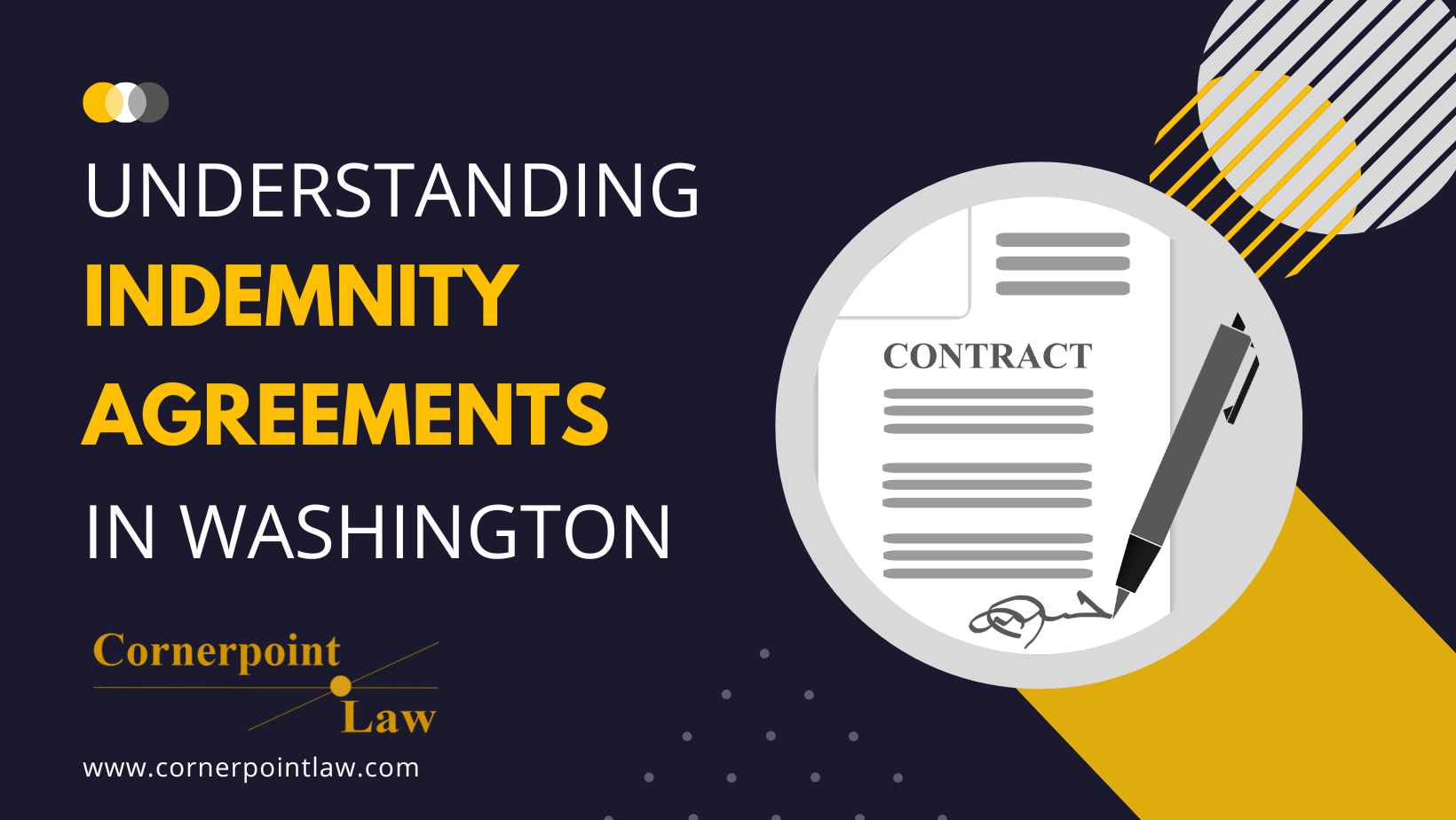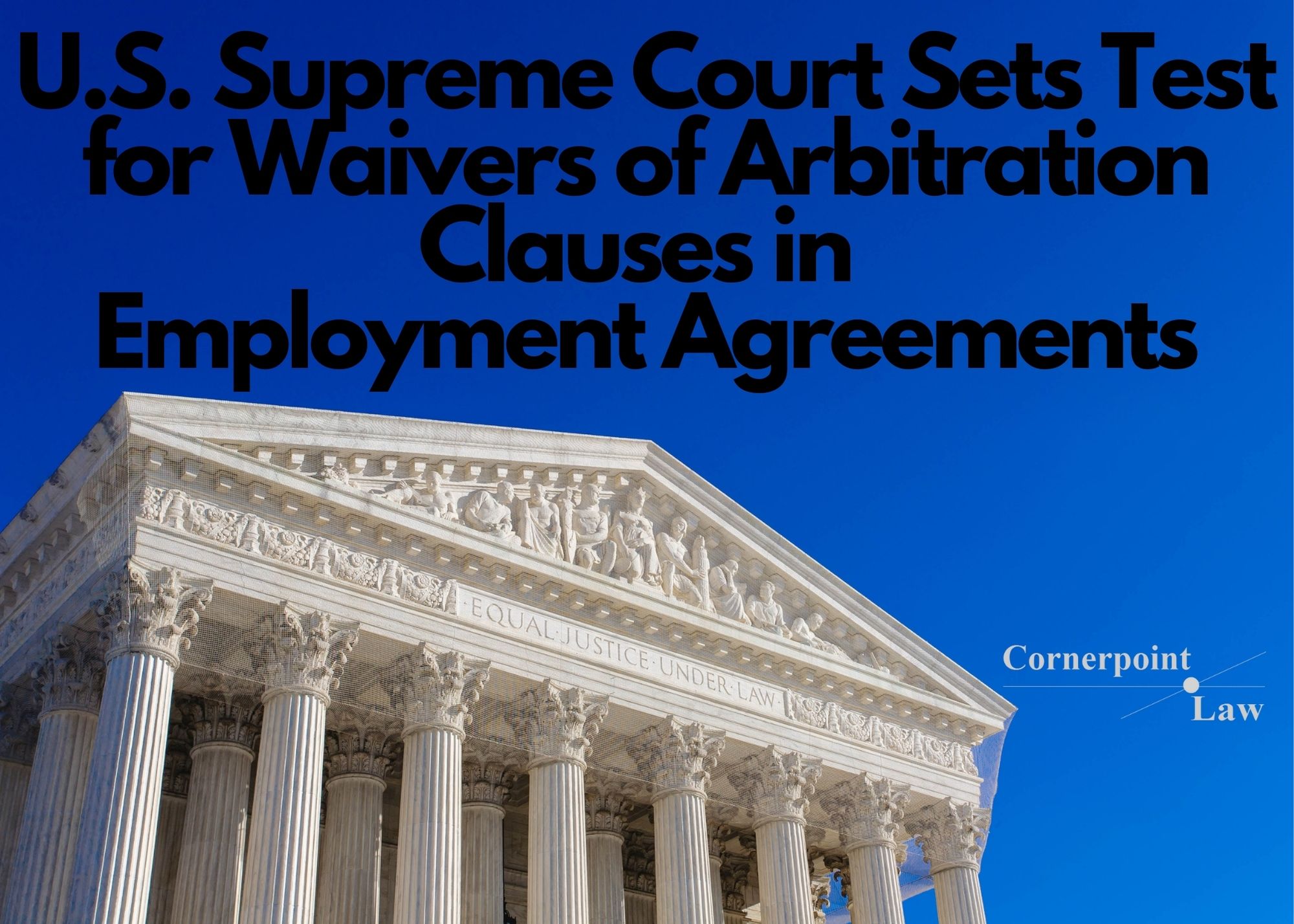Understanding Indemnity Agreements in Washington
August 23, 2023
Unauthorized use and/or duplication of blogposts without express and written permission is strictly prohibited. Excerpts and links may be used, provided that full and clear credit is given, and with appropriate and specific direction to the original content.
The author of this post can be reached by phone at 206-693-2718 or by email.
Indemnity agreements can be critical for protecting businesses and individuals from potential legal and financial risks. These agreements are often used to transfer the risk of loss from one party to a contract to the other in case of certain events or situations, such as accidents, negligence, intentional acts, and breaches of contract.
Proper legal guidance is crucial when drafting or entering into indemnity agreements because indemnity agreements are quite complex. With years of experience in risk management and contracts, Seattle contract attorney Stacia Hofmann offers expert advice on navigating and negotiating these important legal documents. In this blog post, she provides an example of how indemnity agreements in Washington can even protect businesses from their own joint negligence. The law calls this concurrent negligence.
What is an indemnity agreement?
An indemnity agreement is a contract where one party agrees to compensate or reimburse the other party for losses, damages, or expenses incurred due to specified risks, events, or situations that may arise in the parties’ relationship.
What are the purposes of indemnity agreements in small business?
The primary purposes of an indemnity agreement for a small business is (1) to protect the small business from potential liabilities and (2) to allocate risks and responsibilities between the contracting parties. The indemnitor (the party to the contract that gives the protection) agrees to cover certain losses or damages incurred by the indemnitee (the party to the contract that receives the protection), and the indemnitee may have certain obligations as well, such as providing timely notice of claims to the indemnitor.
Can parties to a Washington indemnity agreement allocate any and all risks?
Sometimes yes and sometimes no. There are certain legal rules that promote fairness and public policy, particularly in certain industries. A small business contract attorney can help navigate the complexities of these legal documents.
What is the rule for indemnity agreements in Washington when both parties to the contract cause the risk?
When a risk is jointly caused by the carelessness of both parties to a contract, the law calls this concurrent negligence. The general rule for contracts of indemnity and concurrent negligence in Washington state is that a contract of indemnity will not be interpreted to protect the indemnitee against losses resulting from their own negligence unless this intention is expressed in clear and unequivocal language.
That sounds complex. What is a real-world example of concurrent negligence in an indemnity agreement?
Let’s take a look at the unpublished case of BNSF Railway Company v. Alcoa, Inc. from the Washington Court of Appeals, Division Three, decided on September 27, 2022.
BNSF and Alcoa entered into an agreement for Alcoa to use BNSF’s railroad tracks. In the contract, Alcoa promised to keep the railroad tracks free from obstructions and also agreed to protect BNSF if Alcoa failed to honor this contractual responsibility.
One day, Alcoa moved a railcar to a position where it was not supposed to be. Later that day, BNSF moved more railcars in the area. During this process, a student conductor was injured when he was pinned between BNSF’s newly-arriving railcars and the railcar that Alcoa had moved to an incorrect position.
The injured railroad worker sued BNSF and Alcoa, claiming both were negligent. At stake for BNSF and Alcoa was settlement money paid to the injured worker and the cost of attorneys’ fees. BNSF argued these costs and expenses were Alcoa’s responsibility because Alcoa didn’t keep the tracks free from obstructions as promised in the contract. Even if BNSF was also negligent, BNSF claimed that BNSF was an indemnitee deserving liability protection from the indemnitor, Alcoa, because of the contract language.
Alcoa disagreed and argued that both parties were at fault and the contract language did not have the correct legal provisions to transfer the risk of BNSF’s negligence over to Alcoa.

What did the Court of Appeals decide about the indemnity clause in the agreement in BNSF v. Alcoa?
The appellate judges agreed with BNSF that Alcoa had to protect BNSF, even if BNSF’s negligence was partially the cause of the conductor’s injury. The court found that BNSF did not have to expressly mention concurrent negligence in the contract. Rather, there was proper language in the contract to trigger Alcoa’s indemnification of BNSF if Alcoa failed to keep the tracks clear.
What can small businesses learn from the BNSF v. Alcoa case?
The BNSF v. Alcoa case shows that judges do not have to rely on rigid legal language when they interpret contracts. That’s generally good news for small businesses looking to receive indemnity protection and bad news for small businesses seeking to avoid giving indemnity protection.
However, it’s worth noting that Alcoa initially convinced the trial judge that Alcoa was right and BNSF was wrong. It was only when the case went before three appellate judges that a different decision was reached. So understanding the nuances of contract language is still important for small businesses, and seeking proper legal advice and guidance is recommended when drafting or entering into indemnity agreements.
Email or call me, Stacia Hofmann, to see if Cornerpoint Law can help with your questions about contracts, including indemnity agreements.
This blog is for informational purposes only and is not guaranteed to be correct, complete, or current. The statements on this blog are not intended to be legal advice, should not be relied upon as legal advice, and do not create an attorney-client relationship. If you have a legal question, have filed or are considering filing a lawsuit, have been sued, or have been charged with a crime, you should consult an attorney. Furthermore, statements within original blogpost articles constitute Stacia Hofmann’s opinion, and should not be construed as the opinion of any other person. Judges and other attorneys may disagree with her opinion, and laws change frequently. Neither Stacia Hofmann nor Cornerpoint Law is responsible for the content of any comments posted by visitors. Responsibility for the content of comments belongs to the commenter alone. with her opinion, and laws change frequently. Neither Stacia Hofmann nor Cornerpoint Law is responsible for the content of any comments posted by visitors. Responsibility for the content of comments belongs to the commenter alone.



